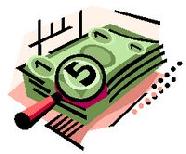
 |
|
| Financial Terms | |
| Notes payable |
|
Information about financial, finance, business, accounting, payroll, inventory, investment, money, inventory control, stock trading, financial advisor, tax advisor, credit.
Main Page: credit, stock trading, payroll, inventory, investment, accounting, financial advisor, business, |
Definition of Notes payable
Notes payableAmounts owed by the company that have been formalized by a legal document called a note.
Related Terms:capital structure, or capitalizationTerms that refer to the combination of current liabilitiesCurrent means that these liabilities require payment in Current liabilityThis is typically the accounts payable, short-term notes payable, and Accounts payableMoney owed to suppliers. BAN (Bank anticipation notes)notes issued by states and municipalities to obtain interim financing for Demand master notesShort-term securities that are repayable immediately upon the holder's demand. Documented discount notesCommercial paper backed by normal bank lines plus a letter of credit from a  Extendable notesNote the maturity of which can be extended by mutual agreement of the issuer and Money market notesPublicly traded issues that may be collateralized by mortgages and MBSs. Municipal notesShort-term notes issued by municipalities in anticipation of tax receipts, proceeds from a Notes to the financial statementsA detailed set of notes immediately following the financial statements in Payable through draftsA method of making payment that is used to maintain control over payments made PayablesRelated: Accounts payable. Project notes (PNs)Project notes are issued by municipalities to finance federally sponsored programs in TANs (tax anticipation notes)Tax anticipation notes issued by states or municipalities to finance current Treasury notesDebt obligations of the U.S. Treasury that have maturities of more than 2 years but less than 10 years.  ACCOUNTS PAYABLEAmounts a company owes to creditors. NOTES RECEIVABLEnotes receivable are promissory notes that the company has accepted from its debtors. Most promissory notes pay interest. Those that are due within a year are shown under “Current Assets.” Those that mature in more than a year would be listed under “Long-term Assets.” If a note is being Accounts payableAmounts owed by the company for goods and services that have been received, but have not yet been paid for. Usually Accounts payable involves the receipt of an invoice from the company providing the services or goods. Accrued expenses payableExpenses that have to be recorded in order for the financial statements to be accurate. Accrued expenses usually do not involve the receipt of an invoice from the company providing the goods or services. Bonds payableAmounts owed by the company that have been formalized by a legal document called a bond. Interest payableThe amount of interest that is owed but has not been paid at the end of a period. Loans payableAmounts that have been loaned to the company and that it still owes. Notes receivableAmounts owed to the company that have been formalized by a legal agreement called a note. Payroll taxes payableThe amount of payroll taxes owed to the various governments at the end of a period. Salaries payableSalaries that are owed but have not been paid at the end of a period. accounts payableShort-term, non-interest-bearing liabilities of a business  accrued expenses payableThe account that records the short-term, noninterest- Accounts payableAcurrent liability on the balance sheet, representing short-term obligations Accounts PayableAmounts due to vendors for purchases on open account, that is, not evidenced Accounts Payable Days (A/P Days)The number of days it would take to pay the ending balance Related to : financial, finance, business, accounting, payroll, inventory, investment, money, inventory control, stock trading, financial advisor, tax advisor, credit. |